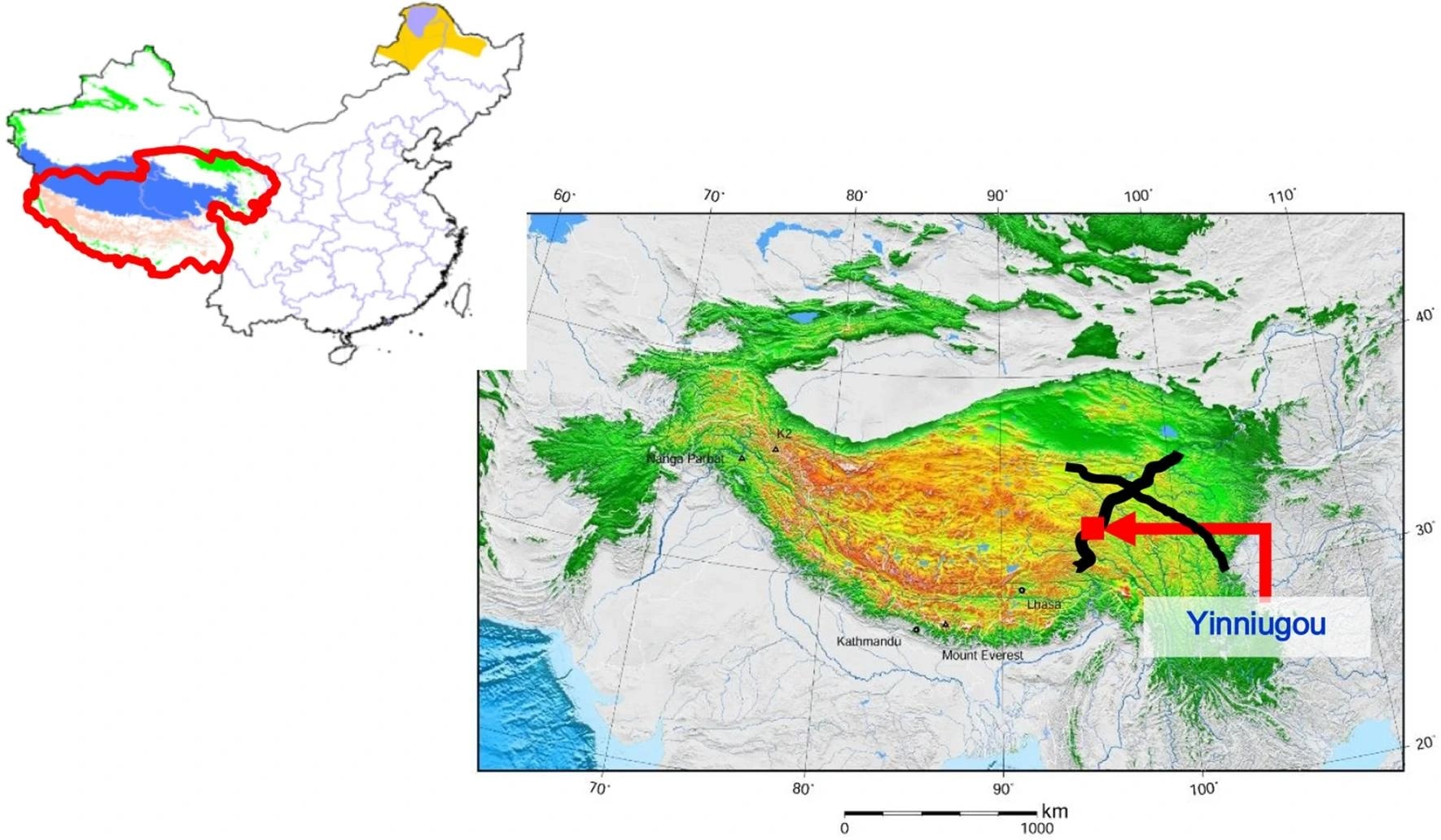Wavelet denoising techniques have gained prominence for their ability to enhance signal quality by reducing noise in various applications. In a recent article published in the journal Scientific Reports, researchers from China have developed an approach to apply wavelet denoising to fiber optic monitoring signals in permafrost regions to improve the accuracy of settlement location identification.
 Map of monitoring site location. Map showing the location of NOAA surveys collected and U.S. Geological Survey (USGS) surveys collected along with sample and bottom photo locations. Image Credit: https://www.nature.com/articles/s41598-024-59941-4
Map of monitoring site location. Map showing the location of NOAA surveys collected and U.S. Geological Survey (USGS) surveys collected along with sample and bottom photo locations. Image Credit: https://www.nature.com/articles/s41598-024-59941-4
Background
The unique environmental conditions of permafrost regions present challenges that necessitate tailored denoising approaches for optimal signal processing. In permafrost regions, where extreme climatic conditions prevail, fiber optic monitoring technology offers a cost-effective solution for monitoring ground settlement. Nevertheless, the intrusion of noise interference into monitoring signals has the potential to distort the accuracy of data, thereby exerting an influence on engineering decisions.
Wavelet denoising has emerged as a promising method to address noise in signals by decomposing them into different frequency components. Previous research has highlighted the importance of selecting suitable wavelet basis functions and decomposition levels to achieve effective denoising in civil engineering applications.
The Current Study
The various steps involved in this study are elaborated in the following subsections:
Signal Acquisition and Preprocessing: The fiber optic monitoring signals were acquired from sensors deployed in permafrost regions, specifically the Qinghai-Tibet Plateau. These signals captured ground settlement data over time, reflecting changes in the monitored area. Prior to denoising, the acquired signals underwent preprocessing to remove any artifacts or outliers that could affect the denoising process. This step involved filtering out any spurious data points and ensuring the integrity of the signal for accurate analysis.
Wavelet Denoising Algorithm: The wavelet denoising algorithm employed in this study utilized the discrete wavelet transform (DWT) to decompose the fiber optic monitoring signals into different frequency subbands. The DWT breaks down the signal into approximation and detail coefficients at each decomposition level, allowing for the separation of noise from the desired signal components. The choice of wavelet basis functions, including Daubechies and Symlets, played a crucial role in determining the denoising effectiveness. These basis functions were selected for their ability to capture local signal features and preserve important information during the denoising process.
Optimal Parameter Selection: To determine the optimal wavelet basis function and decomposition level, the study employed quantitative metrics such as the signal-to-noise ratio (SNR) and root mean square error (RMSE). By evaluating the denoising performance at different decomposition levels and with varying wavelet basis functions, the researchers identified the parameter settings that yielded the best results in terms of noise reduction and signal preservation. The selection of optimal parameters was guided by a systematic analysis of the denoised signals and their fidelity to the original data.
Performance Evaluation: After applying the wavelet denoising algorithm with the selected parameters, the denoised signals were evaluated based on the above-mentioned parameters and correlation coefficients. These metrics provided insights into the effectiveness of the denoising process in reducing noise while retaining the essential signal characteristics.
Statistical Analysis: Statistical tests were performed to validate the denoising results and assess the significance of the improvements achieved through wavelet denoising. Hypothesis testing and confidence interval estimation were utilized to determine the reliability of the denoised signals and the robustness of the selected wavelet parameters. The statistical analysis provided a quantitative basis for evaluating the denoising algorithm's performance and its applicability to fiber optic monitoring data in permafrost regions.
Results and Discussion
The application of wavelet denoising techniques to fiber optic monitoring signals in permafrost regions yielded significant improvements in signal quality and noise reduction. By selecting appropriate wavelet basis functions, such as Daubechies and Symlets, the study effectively preserved essential signal features while suppressing noise components.
The optimization of denoising parameters, guided by quantitative metrics like SNR and RMSE, enabled the identification of the optimal wavelet decomposition level for maximizing noise reduction without sacrificing signal fidelity. Comparative analyses between original and denoised signals demonstrated the algorithm's success in enhancing signal clarity and accuracy, particularly in identifying locations of settlement occurrence.
The denoised signals, validated through field observations, provided a more reliable representation of ground conditions, highlighting the practical utility of wavelet denoising in fiber optic monitoring applications.
Conclusion
In conclusion, the study emphasizes the significance of selecting suitable wavelet basis functions and decomposition levels for effective denoising of fiber optic monitoring signals in permafrost regions. By optimizing these parameters, researchers can enhance the accuracy of settlement location identification, thereby improving the reliability of fiber optic monitoring systems in challenging environmental conditions. The findings underscore the potential of wavelet denoising techniques to mitigate noise in monitoring signals and enhance data quality for infrastructure monitoring in permafrost regions.
Journal Reference
Ni, B., Song, F., Zhao, L. et al. (2024). Wavelet denoising of fiber optic monitoring signals in permafrost regions. Scientific Reports 14, 9085. https://doi.org/10.1038/s41598-024-59203-3, https://www.nature.com/articles/s41598-024-59941-4